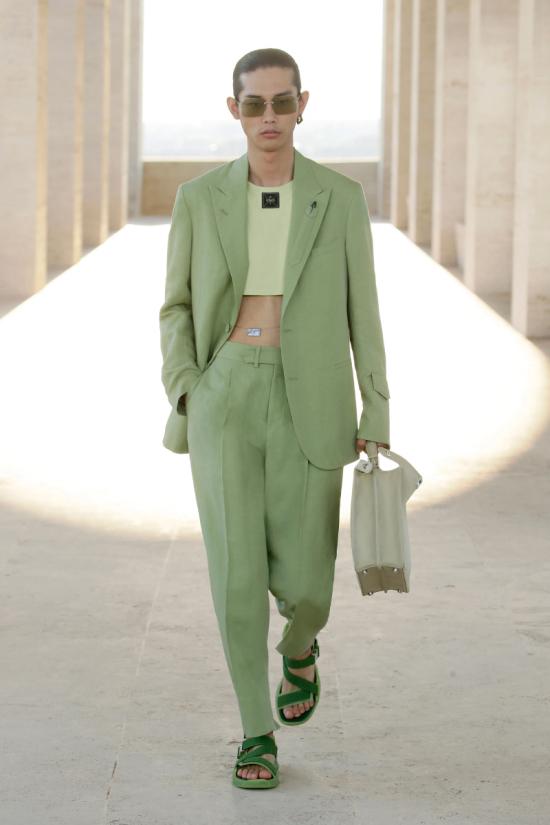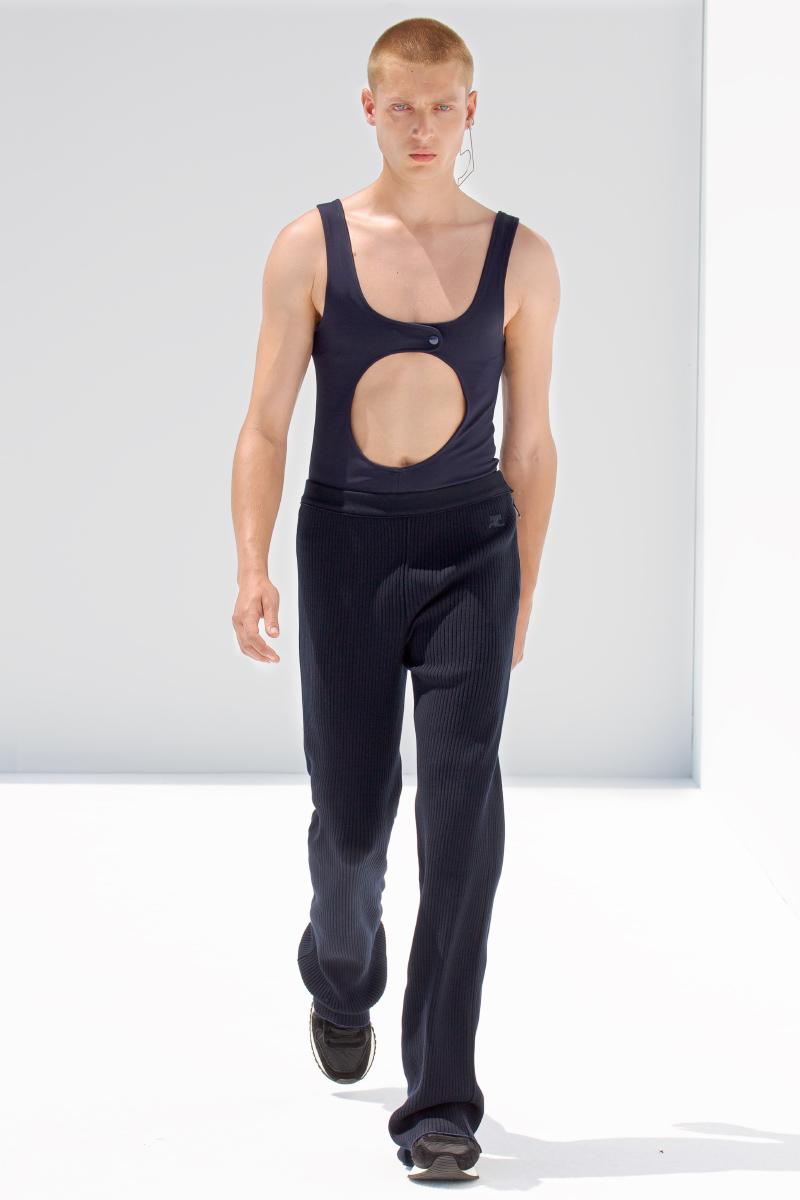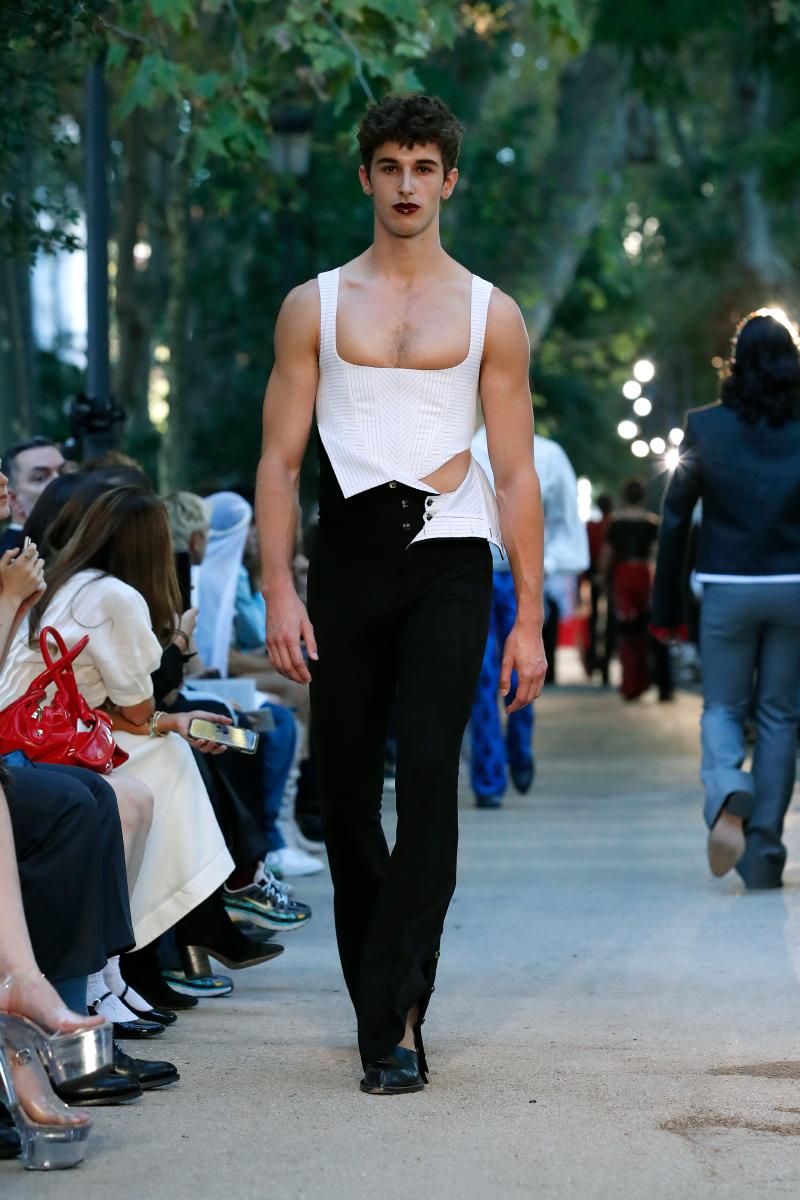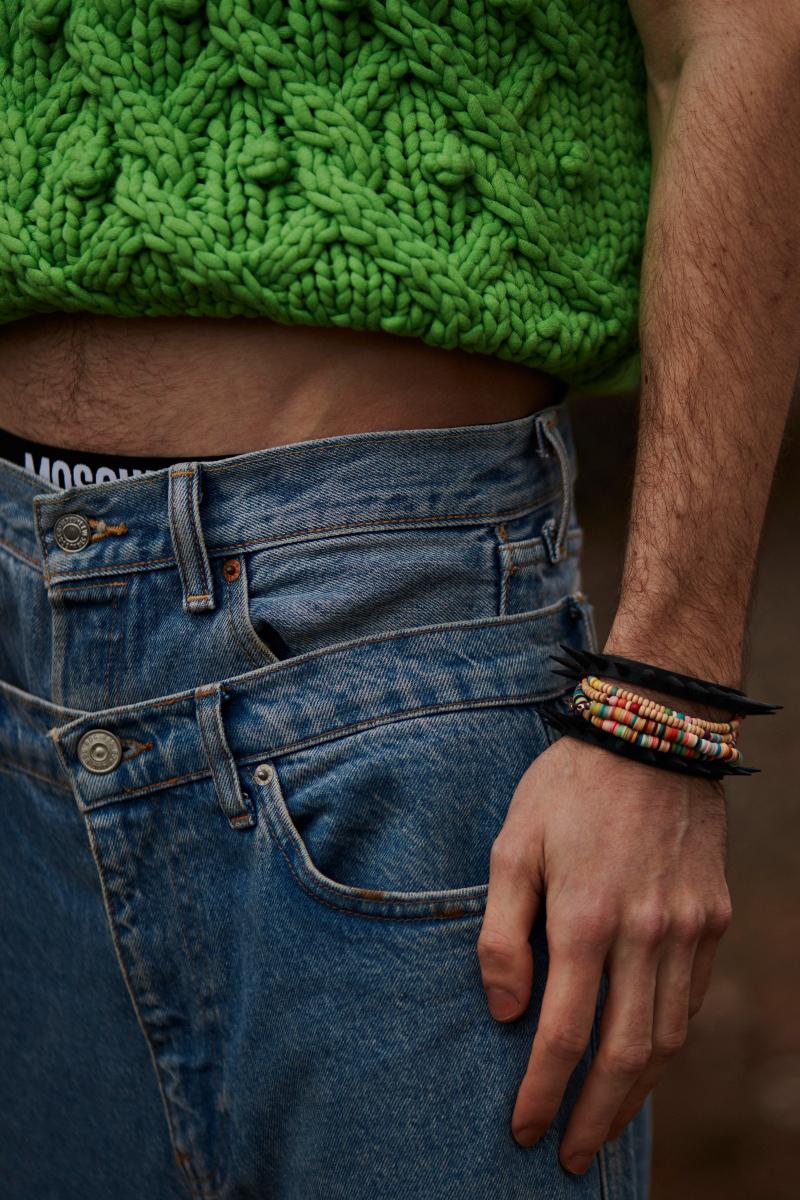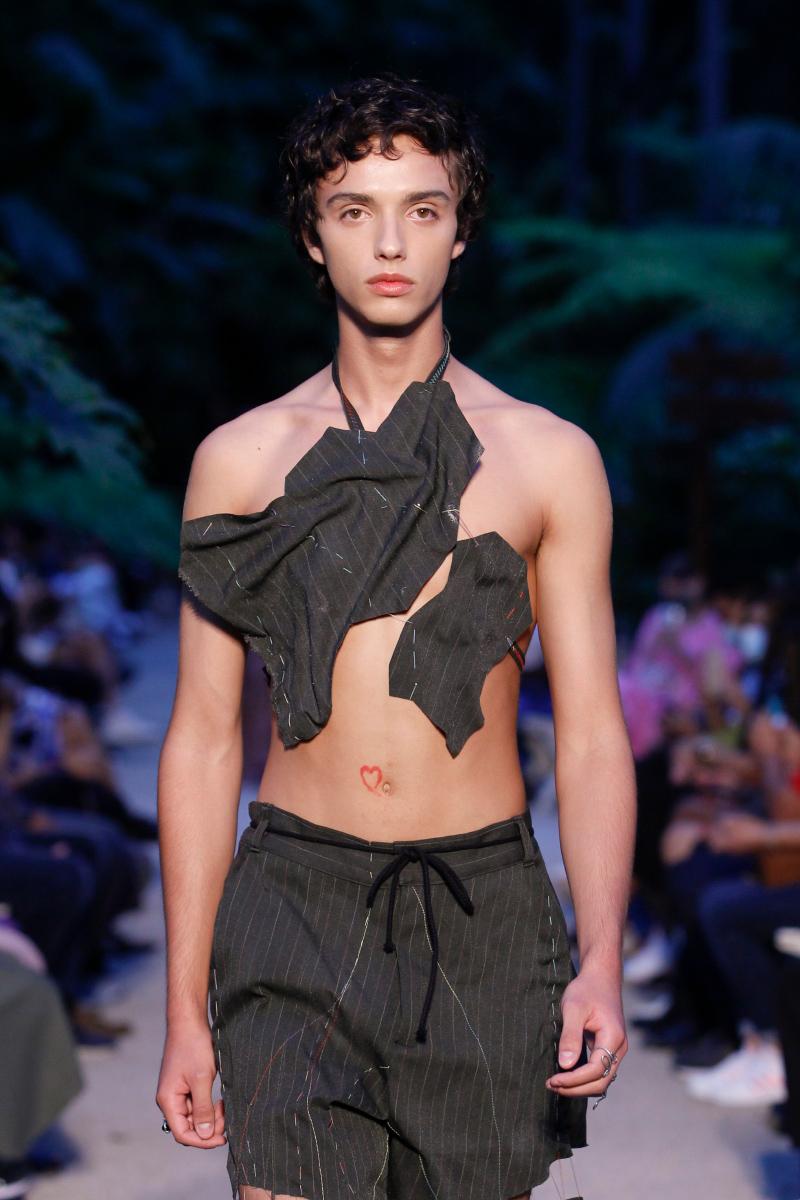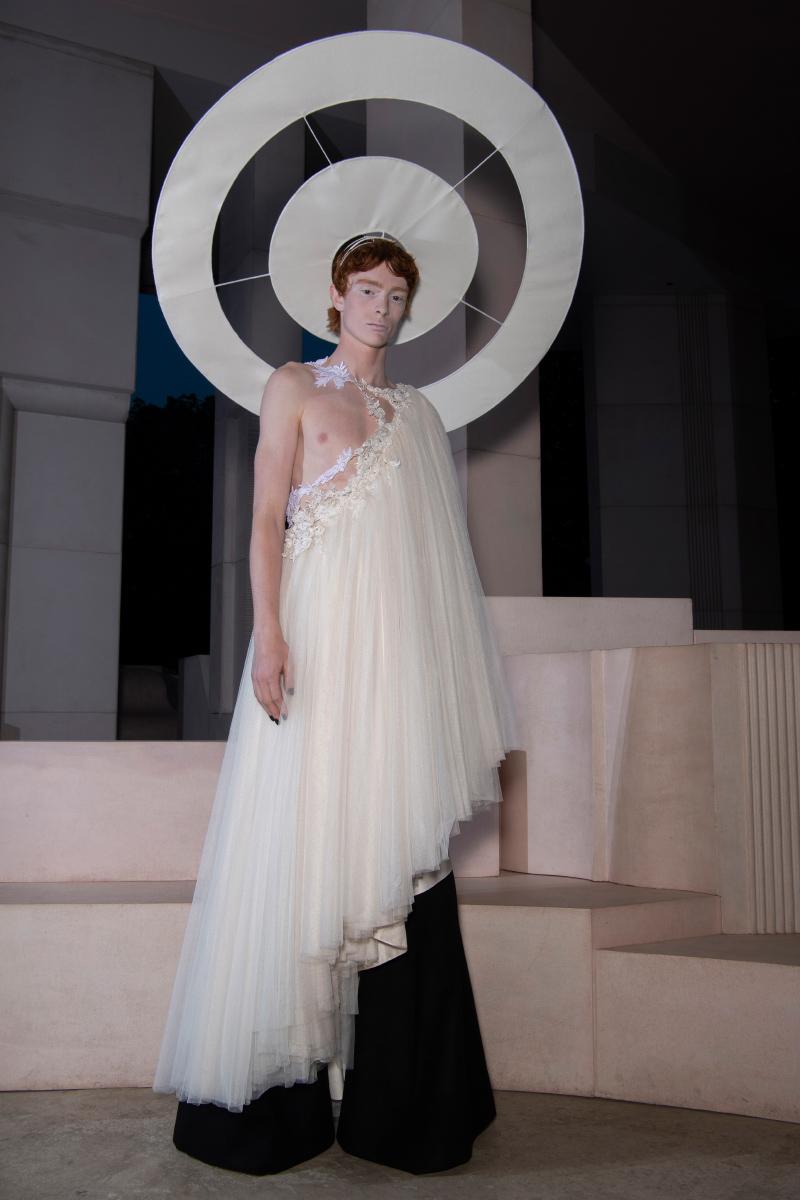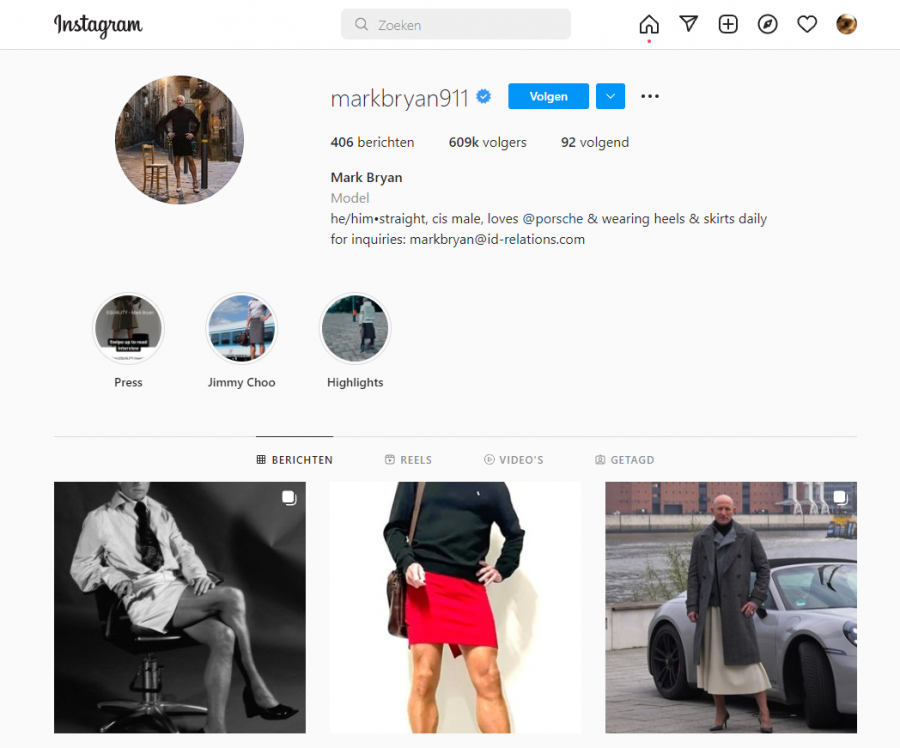
Designers rethink social boundaries with gender-neutral fashion
Fashion since ancient times has been a very important way of non-verbal communication, such as gender-neutral fashion today. In ancient civilizations, people were establishing hierarchical rules in which clothing played a very specific role. Psychology has taught us that people communicate unconsciously through what they wear. This communication comes from colors, silhouettes, and textures which send a direct message to the consciousness of the individual receiver. Fashion designers study communication through clothing, they apply this knowledge to generate messages designed for specific times, places, and situations.
History repeats itself, and as we know, society is in constant change adapting to what is happening in the global environment. The fashion industry is getting stronger every day because it has been adapting in unique ways to society. The gender of some people might change throughout time, and when transgender persons tell others who they are, they face societal stigma, discrimination, and harassment. With the help of fashion, and its revolutionary approach to garments, designers began taking into account that standard gender clothes (for example skirts and crop tops) can be used by anyone, not only females. By creating and publishing those garments, designers try to push the boundaries of the fashion industry, but traditional male and female standards are still prevailing. The mainstream is what regulates the boundaries of what fashion should be based on their thoughts and ideas. In this paper, we research how fashion designers help gender-neutral and transgender people to explore their identities by creating non-standard garments. We believe that designers are like artists in a way: they show (in their art or through their work) what is possible. They rethink social norms and boundaries. That's where their creative power lies.
Gender-neutral and transgender people: fashion can make political statements
Gender/sex is typically considered as binary in the Western culture, with people falling into one of two categories: male or female. In the last few decades, this perspective on gender/sex has begun to shift, causing some resistance (Morgenroth, 2021). Some people, for example, have a gender that combines parts of being a man and a woman, or a gender that is neither male nor female. The gender of some humans might shift throughout time.
Men and women dress in different styles, colors, materials, and objects of clothing. Choices are made based on socially imposed gender standards rather than on fundamental bodily necessities. We take these concepts for granted because, as Lunceford (2010) points out, “we routinely penalize people who fail to perform their gender correctly”. Changing your dress, looks, name, or the pronouns others use to refer to you (such as "she," "he," or "them") are all possible phases in a gender transition (Transquality, 2018). Gender transition occurs when a person begins to live according to their gender identification rather than the gender they were assumed to be at birth. Making the decision to shift might be difficult.
Fashion designers around the world are integrating politics into their brands and clothes
To be safe, fashion designers rarely make big political statements since they must sell their clothing to individuals with diverse views and opinions. Following the US presidential elections, artists of all sorts, including fashion designers, have opted to use their platforms to speak out, mainly against President Donald Trump. Not just in the United States, but also in London, Milan, and Paris. “Whether it was the entire Council of Fashion Designers of America supporting Planned Parenthood, designers having models walk through refugee tents at their shows, or suggesting guests make donations to the ACLU and UN Refugee Agency, fashion people are using the runways to raise their voices”, says Torgeson (2017).
Fashion designers around the world are integrating politics into their brands and clothes, “from the fantasies spun on the runway down to the nuts and bolts of how collections are produced” (Singer, 2020). Designers do not only make clothes, they also create change. “Fashion functions as a mirror to our times, so it is inherently political,” notes Andrew Bolton, Wendy Yu Curator in Charge of The Costume Institute at the Metropolitan Museum of Art (Singer, 2020).
Standard gendered fashion
The fashion industry is constantly adapting when taking a look at the last few years. With a more widely accepted range of clothing, it is no longer bound to traditional conventions. However, when we take a look at what was considered fashion roughly a decade ago, we can determine that it was in fact heavily influenced by gender. Think about dresses for women or suits for men. There were of course some exceptions where fashion designers would try to break these stigmas around it being tied to gender, however, it was not that common.
Furthermore, traditional conventions tied to fashion are often seen in countries where modernity within fashion might seem like an attack against culture. This concept is understandable since clothes have an important symbolic meaning within certain cultures. However. For many people fashion is a form of self-expression, this is where modernity can clash with older traditions.
The word ‘standard fashion’ is relatively self-explanatory. It is still actively discussed when fashion began, there are a few assumptions but pinpointing an exact date is almost impossible. Therefore, standard fashion would be the notion of what has dominated the scene when the term fashion would have been “invented” (Motta & Biagini, 2017) and what types of clothing have made its reoccurrence ever since. This is where you can see the ties in gender throughout history. When it was standardized that dresses and skirts were tied to the female gender and suits were tied to the male gender. Because this image has been such a dominant aspect of fashion throughout history, some cultures are having a difficult time embracing the turn fashion has taken in the past decade.
Our gender-neutral garments and discourse around it
After reviewing the history of fashion designers in the past, we can realize that designers have always had a discourse through clothing. It is known that in these historical moments, fashion has always influenced society, a clear example was the appearance of harem pants for women in 1911 (Paul Poiret), having said this, today it is necessary to deconstruct the idea that skirts are only pieces that can be used by women, thanks to these designers in past times we know that it is possible to change the perspective of people with mainstream ideas to generate an impact on the use of skirts for men.
Furthermore, traditional conventions tied to fashion are often seen in countries where modernity within fashion might seem like an attack against culture
The transformation of techniques and methods in the elaboration of garments has been part of a perspective practice, allowing the solution of a series of current problems expanding the universality, functional possibilities, and aesthetic characteristics of clothing, this solution of problems has created a degree of controversy among the public that sees it on the streets, consumes it, and creates these garments. One clear example is the use of skirts for men, which, despite beginning as garments designed for men, have evolved into key pieces to define the female silhouette, skirts allow better ventilation, no internal seams that rub the thighs and cause irritation, reduce fungal infections, and so on. Men's testicles should be at a lower temperature than the rest of their bodies, thus kilts or plaid skirts are excellent. With this modest example, we can argue that as a result of these developments, these goods are beginning to reflect the global future of apparel.
Previously, skirts denoted youth and virility in ancient Greece and Rome; these items were worn solely by soldiers who invoked a sort of hypermasculinity; yet, skirts functioned hierarchically; men and women who were not fighters wore tunics. People continued to wear tunics in the Middle Ages, and notable personalities such as Henry VIII donned velvet skirts adorned with diamonds, all to symbolize the riches and might of monarchy. Now fast forward to the present. The fact that any gender wears pants is a societal construct. A lady wearing pants would have been considered an outsider 300 years ago. The first women in "masculine" suits arrived in the 1920s (less than a century ago) and were not well regarded.
What is it that prevents women from adapting to their clothing?
This is inextricably linked to the connotation of the genders. Men have always been associated with power, therefore when a woman wore trousers on their outfits, it was interpreted as a positive message of empowerment. However, when the roles are reversed, associating a man with fragility and sensitivity tends to be seen as a sign of weakness, at least that is what the social construct says.
Today, a man wearing a skirt is considered a rebellious gesture outside society's established parameters. But, can we put the pantyhose on the shelf and start democratizing clothing? The value assigned to gender in clothing is nothing more than a convention that changes with time and culture.
Modern-day fashion
When taking a look at Figure 1, you can see that certain colors are often used in gender-neutral fashion. Mostly they make use of more vibrant colors. However this is a small portion of the whole picture, there are a lot more characteristics that define gender-neutral fashion.
For example, in this collection, showing the lower part of the body like the traditional crop top is often associated with the female gender in “mainstream” clothing. The model also has a form of jewelry around the waist, presumably to emphasize the lower part of the body. Also, note the use of a handbag which used to be a key aspect of the female gender within the fashion world.
Figure 1: the collection of Fendi spring summer
In figure 2, we see the playful way the designer has made use of certain shapes. Especially around the upper part of the body, the typical two thin straps lead into a U-shape which then reveals a part of the cleavage. Yet again often used within normal fashion by the female gender. The circle around the lower part of the body is also designed like this for the same reason. Since it lacks practicality, the reason behind it is most likely to reveal the belly button.
Figure 2: precollection of Courrèges Spring/Summer 2022
We see the same concept mentioned above in Figure 3, where the U-shaped neckline is used again. In normal type fashion, male clothes are often deemed more practical rather than fashionable. In gender-neutral fashion, this ideology is thrown out of the window. This is shown in current designs making use of more of the male attributes like the chest, which is reflected in these U-shaped designs. But also the lower part of the male body, where the pelvis is shown. The design in Figure 2, does this in a relatively mild manner where the part of the top is connected to the pants, and a bit of skin is shown. The design of showing the pelvis is more noticeable in fashion designs such as these.
Figure 3: PALOMO Fall/Winter 2021 “CÓRDOBA” Collection
Revealing skin within gender-neutral fashion is definitely a more upcoming trend. As seen in Figure 4, where the sweater is short enough to show the outline or pelvis, also commonly referred to as the V -shape, an attribute some men have and others do not. This shows that there is an interest in this part of the male body, which used to be hidden.
Picture 4: SANGUENOVO
How gender-neutral fashion differs from men's clothing
In the pictures of designs from fashion designers that make or try to create gender-neutral clothing, there are a few things that stand out. One of the things is the shape of the clothing where standard clothing looks according to a fixed pattern most of the time, this is different with gender-neutral clothing. The shape of a t-shirt, sweater, or long sleeve shirt almost always looks the same. In gender-neutral clothing, the form in which the garments are displayed is continuously played with. An example of this is the design of designer Reimao (see Figure 5). This garment cannot be described as a t-shirt due to its special shape. It covers part of the upper body but leaves other parts visible. This way of playing with the shape of garments is visible several times in gender-neutral clothing.
Figure 5: Reimao
Another big difference between standard gender clothing and gender-neutral clothing is the way some parts of the body are exposed. Gender-neutral clothing can show parts of the body that are normally covered by clothing. An example of this is the design of Harris Reed (see Figure 6). In the second picture, a man is standing wearing a sort of dress while one of his nipples is not covered by clothing. In standard men's clothing, this would not occur, but with gender-neutral clothing, this is the most normal thing in the world. Different designers leave parts of the body exposed such as the abdomen, parts of the chest, or even, as in the example mentioned above, nipples.
Figure 6: Design from Harris Reed
The two designers (Reimao and Harris Reed) are perfect examples of designers who don’t care about how fashion can be also for gender-neutral people. Harris Reed states on his website that "the overall DNA of Harris Reed brand and personal identity, is best described as Romanticism Gone Nonbinary" (Reed, 2021). These designers are an example to other designers that want to create gender-neutral fashion. They show that in gender-neutral fashion, you can play with the use and shapes of garments and that piece of advice is a blueprint for upcoming designers.
Standards and boundaries in fashion that needs to be broken
As mentioned before, fashion designers can help give non-binary people an opportunity to express themselves and show their identity. The standards in fashion nowadays are not helping to create this awareness for non-binary people. There are a lot of certainties and boundaries that are still connected to gender. One example of a standard in fashion is a dress or a skirt. When searching for dresses or skirts on websites from clothing stores or brands, there is a big chance that the models in the pictures are only women. This contributes to the image that only women can wear dresses or skirts.
However, for non-binary people, wearing a dress or skirt is not only reserved for women. Every person can wear whatever they want to wear. Influencer Mark Bryan (almost 600k followers on Instagram, Figure 7) is currently trying to push the boundaries. He is posting pictures of himself wearing skirts on his Instagram page to show other people that you can wear every piece of clothing, regardless of the stigmas that are around that piece of garment. These sort of people help non-binary people by showing that fashion does not need to have garments that are just for men or women.
This evolution of clothes becoming more and more non-binary does also affect the crop tops. In the summer of 2021, stylist Tabitha Sanchez pointed out that the boundaries of men wearing crop tops are disappearing (Criales-Unzueta, 2021). Because non-binary people are expressing themselves more and more using fashion, this also influences the overall fashion where wearing a crop top was for a very long time just an object a woman could wear, is this a thing of the past now. The summer trend for men in 2021 was crop tops and the fashion designers admitted that they were inspired by non-binary people.
Figure 7: Influencer Mark Bryan
Gender-neutral clothing in fashion
In the history of fashion designers, fashion has always had a discourse through clothing. It is possible to change the perspective of people with mainstream ideas to generate an impact on the use of skirts for men. The transformation of techniques and methods in the elaboration of garments has been part of a perspective practice, allowing the solution of a series of current problems expanding the universality, functional possibilities, and aesthetic characteristics of clothing.
The two designs from Reimao and Reed show that the difference between gender-neutral fashion and standard men's clothing is body exposure and the shape of clothing. When talking about body exposure, different designs show the different body parts that are not covered with clothing, while standard men's clothing covers these parts. The shapes of the different garments in gender-neutral clothing are also unique. It looks like there is not a specific pattern in which the garments should look, you can play with the shape of the garments.
Not only specific non-binary clothing but also breaking standards in fashion should help non-binary people to express themselves. Two examples of fashion standards are the fact that it seems that only women can wear skirts or crop tops. Influencers and fashion designers, like Mark Bryan and stylist Tabitha Sanchez, show in their own way that it is perfectly normal for everyone, regardless of their gender, to be able to decide what they want to wear.
References
Criales-Unzueta, J. (2021, August 25). Is menswear the queerest it’s ever been?
Lunceford, B. (2010). Clothes Make the Person? Performing Gender Through Fashion. Communication Teacher, 24:2, 63-68.
Morgenroth, T., Sendén, M. G., Lindqvist, A., Renström, E. A., Ryan, M. K., & Morton, T. A. (2021). Defending the Sex/Gender Binary: The Role of Gender Identification and Need for Closure. Social Psychological and Personality Science, 12(5), 731–740.
Motta, G., & Biagini, A. (2017). Fashion through history : costumes, symbols, communication. Volume II. Newcastle upon Tyne : Cambridge Scholars Publishing, 2017.
Reed, H. (2021). Harris Reed.
Singer, M. (2020, September 17). Power Dressing: Charting the Influence of Politics on Fashion.
Torgerson, R. (2017, March 6). 22 Designers Who Are Acting Up and Getting Political on the Runway.
Transquality (2018, October 5). Understanding Non-Binary People: How to Be Respectful and Supportive.
